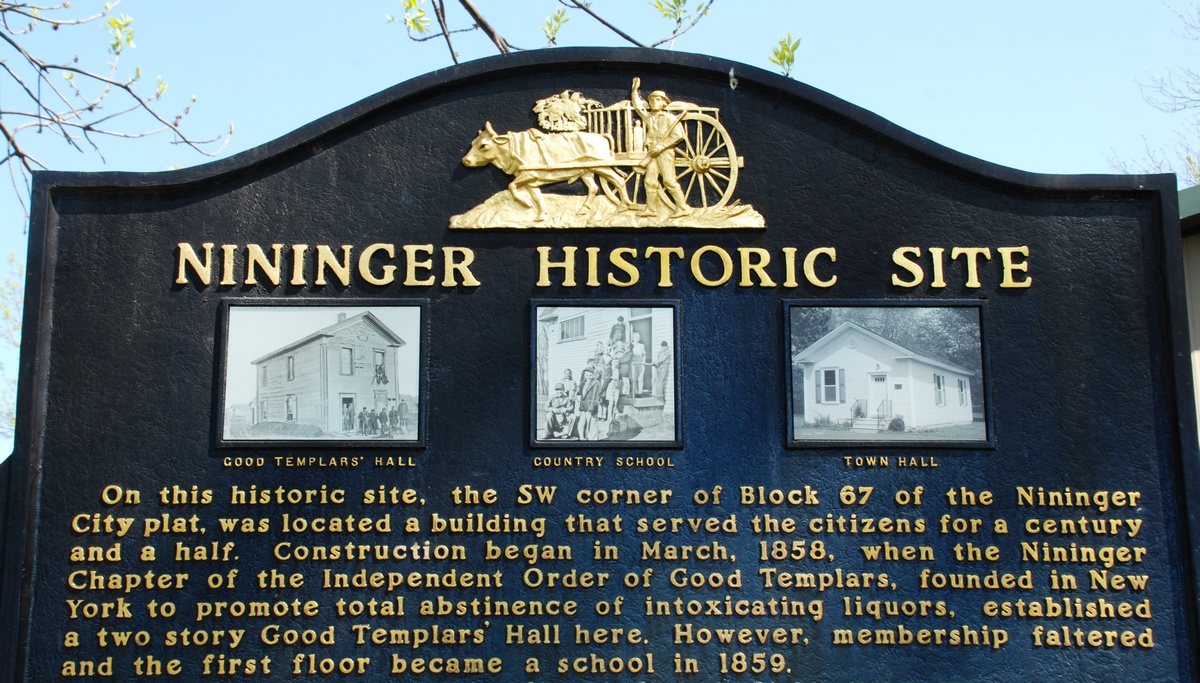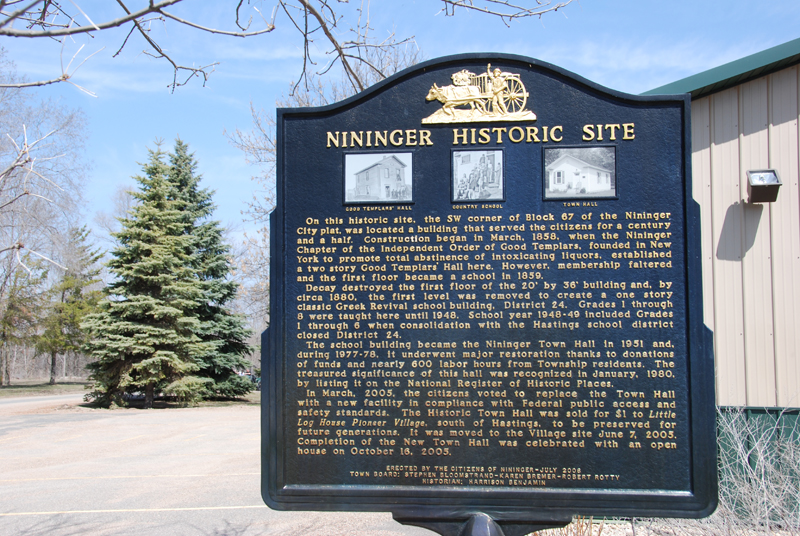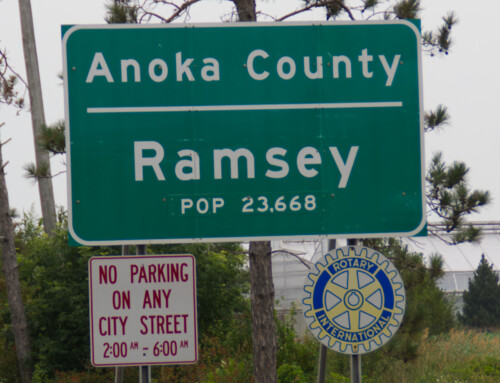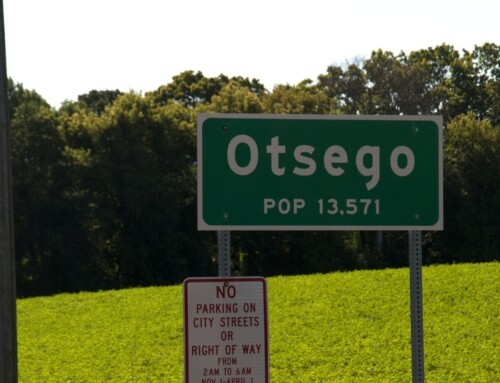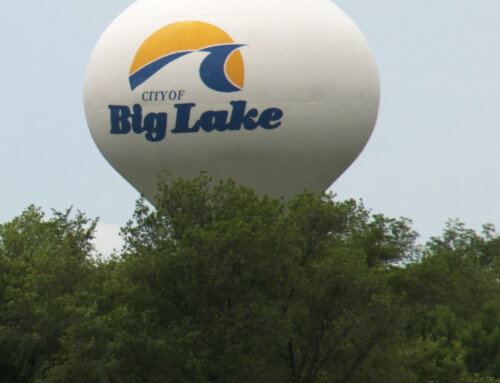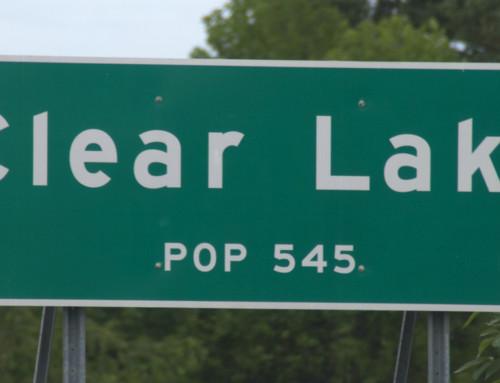History
The future village of Nininger was built on a high bank above the river, safely out of reach of high water, but with good access to the river. The settlement was first known as Bluff Landing, then as Bassett’s Landing because John Bassett lived there.
The first European settler was the French Canadian Louis Belanger. Belanger built a log cabin on an island in Spring Lake, and sold cordwood to passing boats. In 1851 William Hartshorn provisioned Belanger with trading goods and sent him to get furs from the Ojibwe. When Belanger didn’t return, Hartshorn sent his clerk, A.L. Larpentier, to search for him, who located him near St. Croix Falls and learned that Belanger had sold all the furs he was supposed to deliver to Hartshorn. Belanger was thrown in jail where he hung himself before going to trial.
Peter and Henry Caleff (transplants from New Brunswick) arrived around 1849. They started a trading post with Silas Poor (and a shingle plant after that) but the Caleffs soon moved to California.
John Nininger, the brother-in-law of Minnesota Governor Ramsey (he married Ramsey’s sister, Catherine Kelker Ramsey in 1843) bought the Caleff property and, with his business partner, Philadelphia-native Ignatius Donnelly, platted the village of Nininger in 1856. The village got off to a fast start, attracting investments from prominent people across the country because of Nininger’s political connections. The village incorporated in 1858 with Ignatius Donnelly as the first council president. Nininger was a hopping village of 1,000 residents at that time, with a productive sawmill, hotels, stores, blacksmiths, six saloons, a newspaper, and much more.
The village’s good fortunes didn’t last long, however. The national economic collapse known as the Panic of 1857 hit the village hard, especially when Congress stopped a land grant program that the village needed to develop a railroad. The village’s growth was also stunted when it couldn’t afford to start a river ferry and by the fact that a lot of steamboats wouldn’t stop at Nininger, so anyone trying to reach the village had to get off at Hastings or St. Paul and travel by land. The village’s fate was sealed, though, when it was bypassed by the railroad in 1859. People began to leave and entire buildings were moved; the village was largely abandoned by 1863. Even the village’s namesake, John Nininger, moved away, relocating to Lowndes County, Alabama after the Civil War to grow cotton; he died there in 1878. Donnelly, however, stuck around.
While Ignatius Donnelly didn’t have much success as the proprietor of the village of Nininger, he did so well in other ways that he is one of the area’s best known characters. In politics, he served three terms as a Republican congressman, and also was elected to terms as a state senator and lieutenant governor. He was an early progressive, favoring women’s suffrage, a graduated income tax, and agricultural reforms. He gained most of his fame, though, for as an author. His best-selling book, a national hit, was called Atlantis: The Antediluvian World. He was also quite quotable. He is reputed to have said:
They may raise more corn in Illinois, more wool in Ohio, more pork in Iowa, more cotton in Mississippi, but Minnesota can beat them all in raising men.
Exploring the Area
Spring Lake Park Reserve (8395 127th St. East; 952.891.7000) is a large bluff-top park (you may also hear it called Schaar’s Bluff) with great views looking out over the Mississippi River.
The Mississippi National River and Recreation (651.290.4160) runs for 72 miles through the Twin Cities. While the National Park Service owns very little land along the corridor, it has many programs to help connect people to the river. Visit their website for a complete listing of places to enjoy the river.
**Nininger and its neighbors are covered in Road Tripping Along the Great River Road, Vol. 1. Click the link above for more. Disclosure: This website may be compensated for linking to other sites or for sales of products we link to.
Where to Go Next
See the Twin Cities Overview for tips on festivals, getting around, and more.
Heading downriver? Check out Hastings.
Heading upriver? Check out Rosemount.
Community-supported writing
If you like the content at the Mississippi Valley Traveler, please consider showing your support by making a one-time contribution or by subscribing through Patreon. Book sales don’t fully cover my costs, and I don’t have deep corporate pockets bankrolling my work. I’m a freelance writer bringing you stories about life along the Mississippi River. I need your help to keep this going. Every dollar you contribute makes it possible for me to continue sharing stories about America’s Greatest River!
Nininger Photographs
©Dean Klinkenberg, 2013

